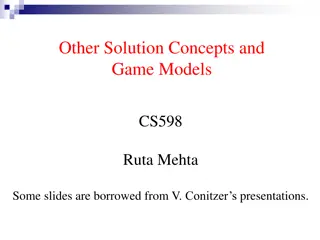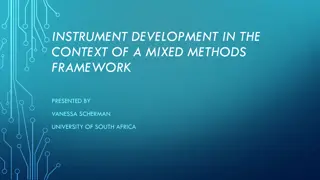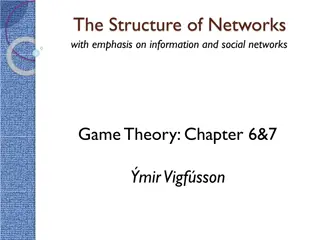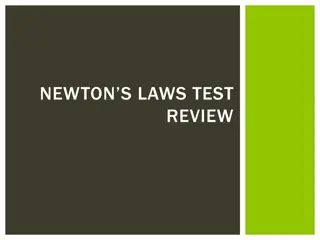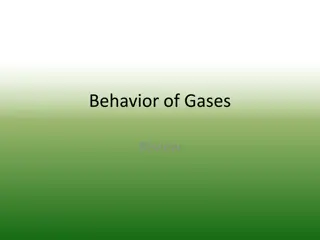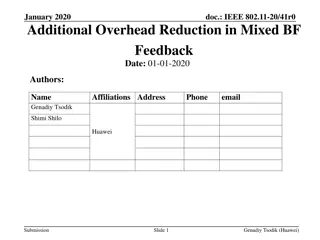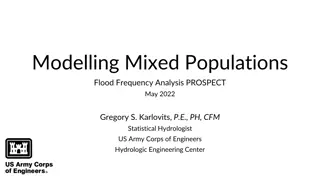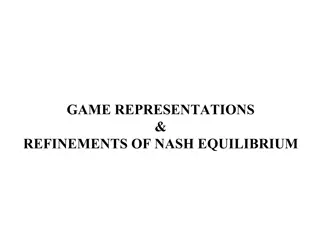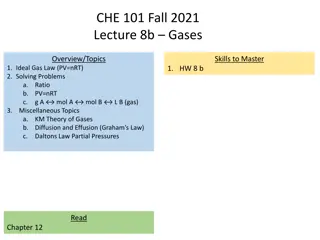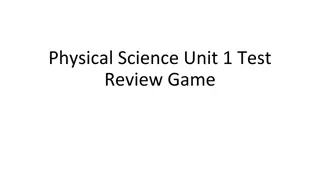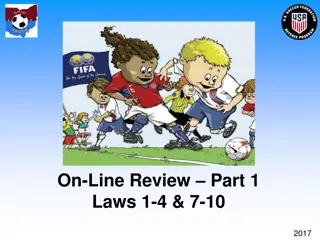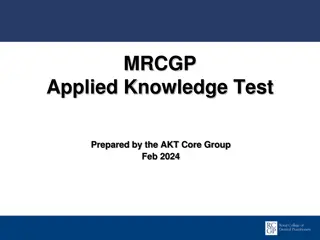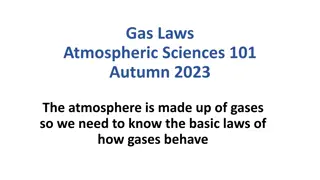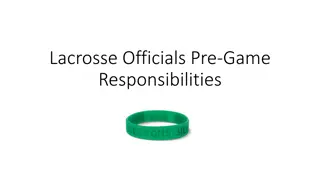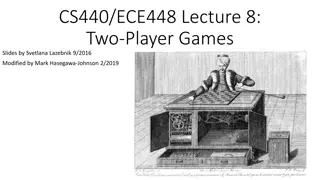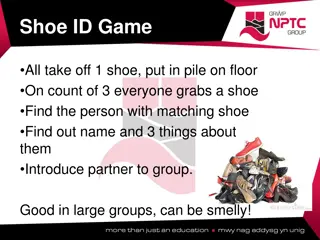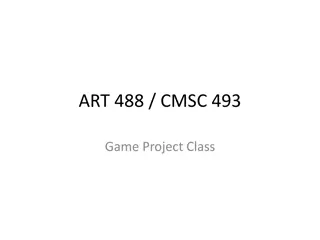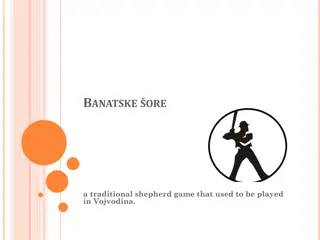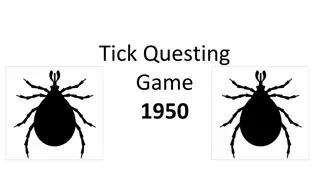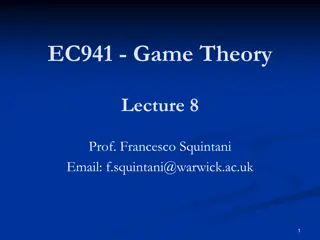Gas Laws Review Game - Test Your Knowledge on Gas Concepts and Mixed Gas Laws
Get ready to test your knowledge on gas concepts and mixed gas laws with this interactive review game. Answer questions on gas properties, volume changes, pressure variations, and more. Challenge yourself and your team members as you solve problems related to gas laws. Improve your understanding and mastery of gas laws with fun and engaging rounds!
Uploaded on Oct 06, 2024 | 0 Views
Download Presentation

Please find below an Image/Link to download the presentation.
The content on the website is provided AS IS for your information and personal use only. It may not be sold, licensed, or shared on other websites without obtaining consent from the author. Download presentation by click this link. If you encounter any issues during the download, it is possible that the publisher has removed the file from their server.
E N D
Presentation Transcript
UNIT 8 REVIEW GAME Gas Laws
Rules: Pick one of the questions to do in each problem set (1 question per team member). Once you finish your question, pass back your paper to your teammate. If you are the last person in your row, check the work of the people in front of you. When you are finished, run your paper back up to the front!!
Round 1: Gas Concepts ***Pick 1 question/person Answer the following questions: 1. How does temperature affect particle speed? 2. Why would adding gas to a container increase the pressure? 3. Describe the relationship between (1) P & T, (2) P & V, and (3) V & T. 4. What does STP mean? What does it correspond to?
Round 2: Mixed Gas Laws ***1 question/person Solve the following problems show your work! 1. A 70. liter sample of gas initially at 280 C is allowed to cool at constant pressure, what will the new volume be at O C? 2. It s not safe to put aerosol canisters in a campfire because the canisters can explode. If a 1500 mL canister which contains 16.0 grams of hydrogen gas is tossed in a campfire at 1400 C, what is the pressure inside the canister? 3. A sample of oxygen gas has a volume of 150 mL when its pressure is 440 mmHg. If the pressure is increased to 760 mmHg and the temperature remains constant, what will the new gas volume be? 4. At a pressure of 780 mmHg and 24.2 C, a certain gas has a volume of 350 mL. What will the volume of this gas be at STP?
Round 3: Mixed Gas Laws ***1 question/person Solve the following problems show your work! 1. Seaweed plants release oxygen gas during photosynthesis. A 0.10 mL bubble is released under water at a pressure of 176 kPa and a temperature of 10 C. What volume will this bubble occupy at the surface, where the temperature is 15 C and the pressure is 250 kPa? 2. How many moles of gas are in a scuba tank if the temperature of the tank is 30 C and the pressure is 200 atm? The volume of the tank is 7 liters. 3. At a pressure of 405 kPa, the volume of a gas is 6.00 mL. Assuming the temperature remains constant, at what pressure will the new volume be 4.00 mL? 4. What volume will 1 mole of gas occupy at 20 C and 812 mmHg?
Round 4 ***1 question/person 1. If you have 46.0 g of oxygen gas at STP, how much volume will the oxygen take up? 2. A 0.24 g sample of a gas occupies a volume of 115 mL at a pressure of 712 mm Hg and 22 C. What is the molar mass of this unknown gas? 3. If you react 3.6 g of KClO3at STP, how many milliliters of oxygen gas will you produce? 2 KClO3------> 2 KCl + 3 O2(g) 4. If you want to produce 450 mL of CO2at a temperature of 23 C and 0.90 atm, how many grams of methane (CH4) would need to react? Note that the reaction is unbalanced and not at STP. ___ CH4(g) + ___ O2(g) ____ CO2(g) + ___ H2O (g)
Round 5: Daltons Law & Grahams Law ***Pick 1 question/person 1. A mixture of oxygen, hydrogen and nitrogen gases exerts a total pressure of 278 kPa. If the partial pressures of the oxygen and the hydrogen are 112 kPa and 101 kPa, what is the partial pressure exerted by the nitrogen? 2. An unknown gas diffuses 0.25 times as fast as He. What is the molar mass of the unknown gas? 3. Which gas will effuse/diffuse slower? CO or Cl2 4. If equal amounts of helium and argon are placed in a porous container and allowed to escape, which gas will escape faster and how much faster?




